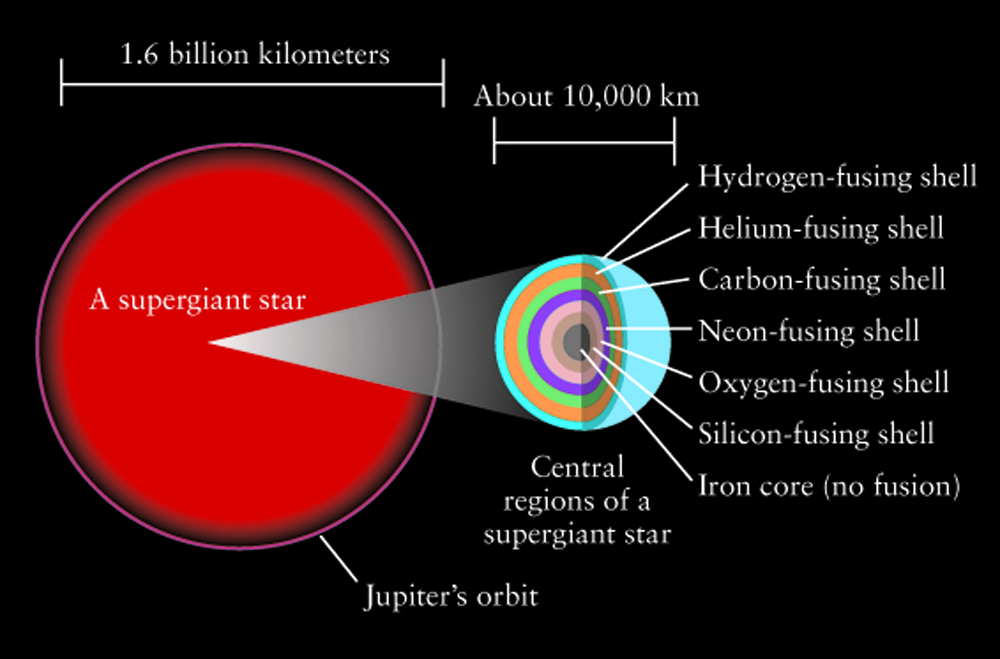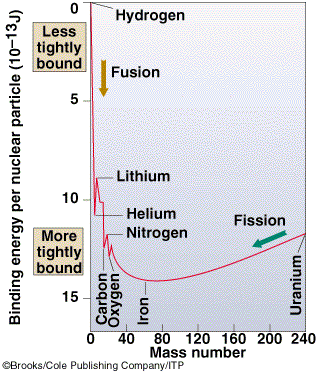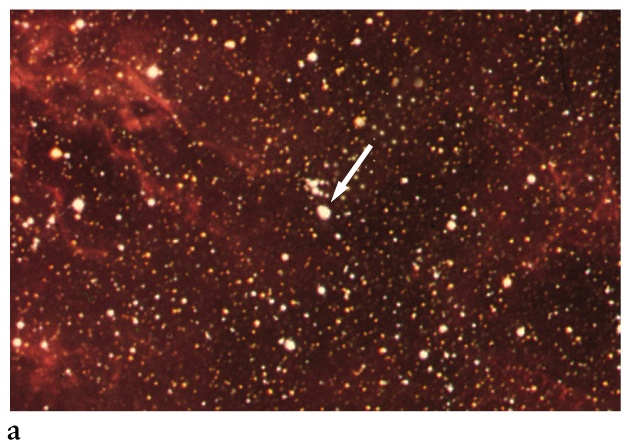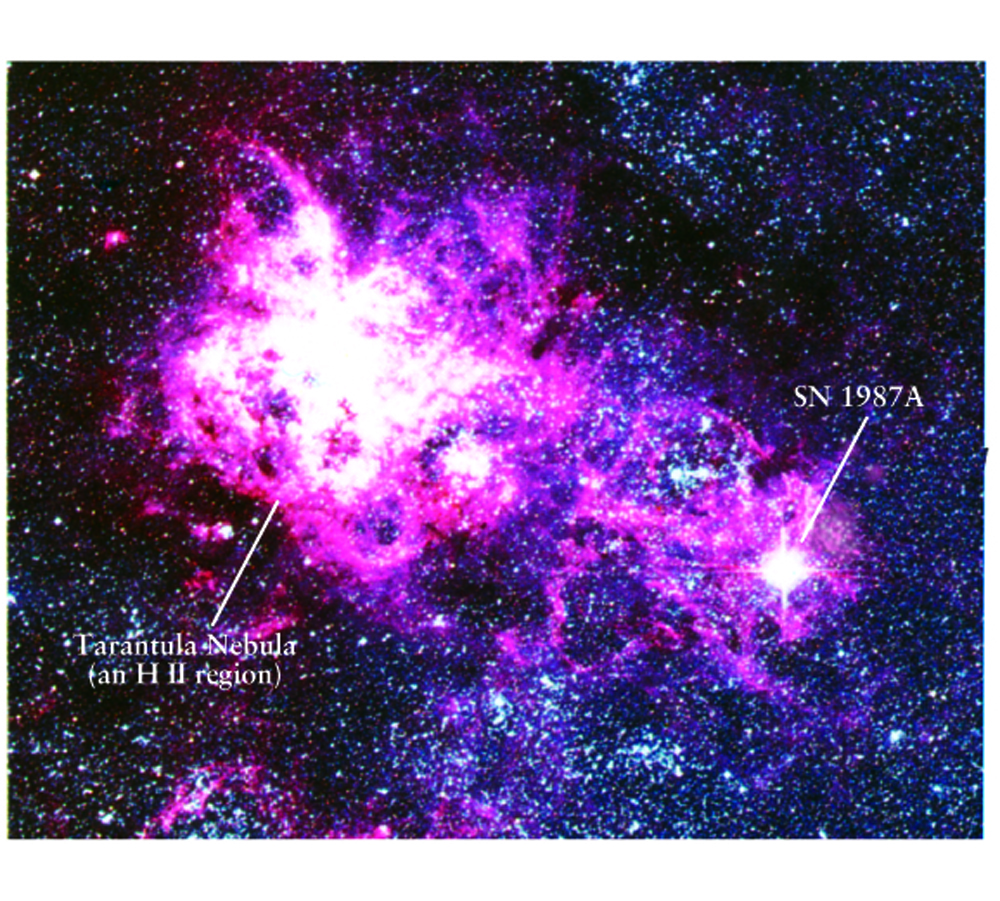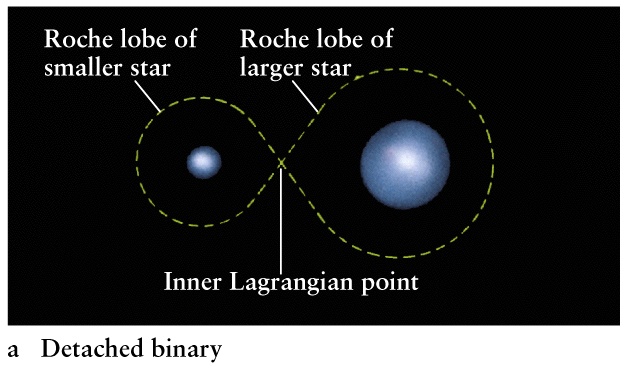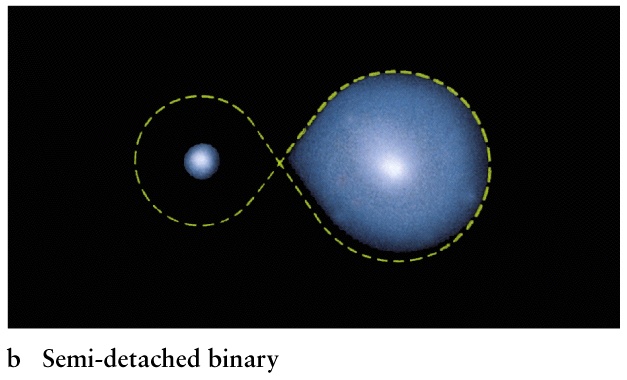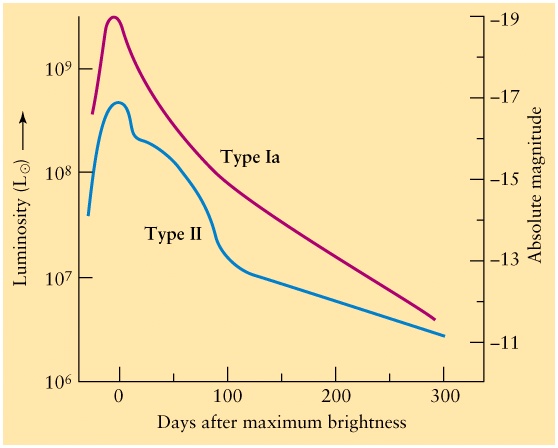- The cores of the high mass stars are so large
than when the fuel is burnt out, they cannot be stabilized even by denegerate pressure, and collpase further. High mass stars can have many successive stages
of
- fusion of an element in a core and lighter elements in shells around the core
- exhaustion of the element
- core collapse and heating
- fusion of higher mass elements
- etc...
- The general trend is for the star's surface to
become cooler and to become a blue giant and later
a red supergiant.
- But there are several oscillations from red (super)giant
to blue giant and back
phase, correspondent to ignition of the next, heavier, fuel in the core.
- Star loses signifcant mass during super giant stage
|
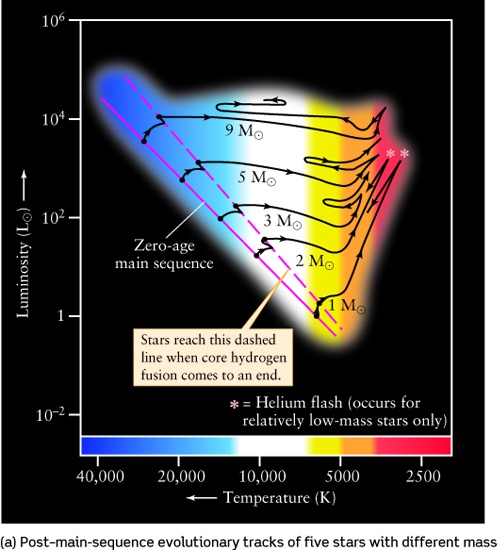
|

